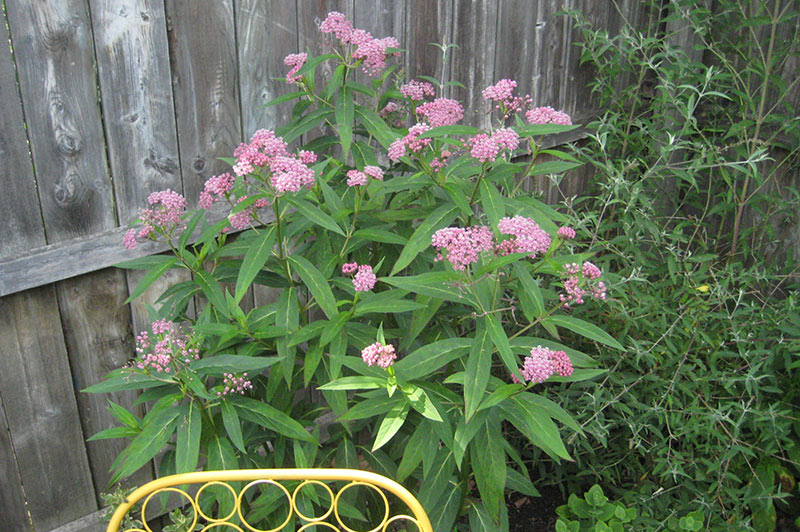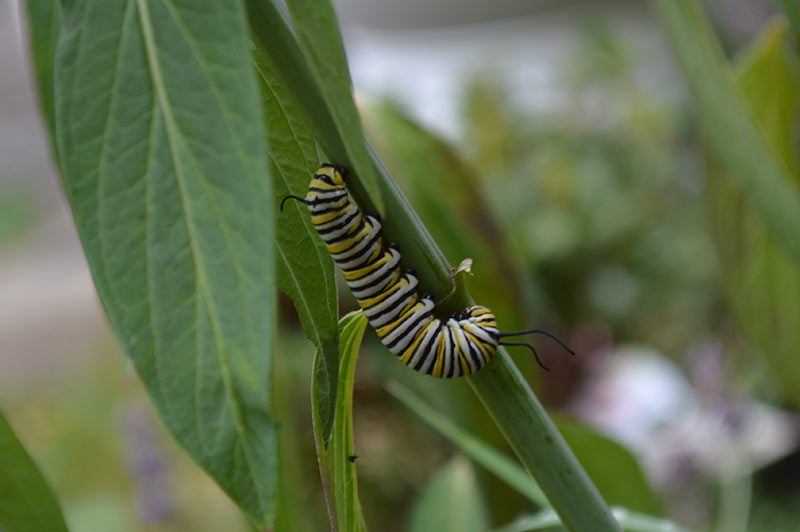As I’ve wrote (preached?) about multiple times, the Lot is being arranged, planted, designed, arranged again for more than The Other Half’s and my benefit. I enjoy spending time in the garden and will not turn down garden compliments from anyone willing to shower them upon me. But as I’ve continued to learn about gardening, I’m wanting more and more to develop a tiny ecosystem on the Lot to support a whole variety of critters.
Enter Swamp Milkweed
In 2014 a handful of native plants were integrated into the assortment of flora on the Lot. One of these plants was Asclepias incarnata or Swamp Milkweed. This perennial plant likes full sun, though it can tolerate a bit of shade. It’s happiest in medium to wet soil. When you see it in The Wilds, it often is near wetlands. It has a tall, slender silhouette growing 4 to 5′ that does not require staking. Swamp Milkweed can be grown in USDA hardiness zones 3a-8b. Here is a shot of the plant in bloom on the Lot during July of 2015.

Monarch Nursery
Swamp milkweed is also known to attract monarch butterflies, not only for a nectar source but also as a host plant for their young. Monarchs will lay eggs on the plant, the eggs hatch, and voila there is a buffet awaiting the hungry, hungry caterpillar.
I have waited SO long for what happened today. Mom G and I had returned from a day wandering a beautiful lavender labyrinth and herb garden and then participating in retail therapy at a great nursery. I was placing an anise hysop near the swamp milkweed because I plan on expanding the bed and making it a pollinator patch. I was moving to straighten up again when I came eye to eye with this little one.

The Other Half has joked my squeals of delight (in regards to plants and kittens) reach beyond the audio range of the human ear. This was one of those times. I literally was dancing in place and motioning Mom G over to take a look. On the swamp milkweed was the first monarch caterpillar I have ever noticed on the Lot.
Plant It and They Will Come?
There are many, many guides online that will coach you through which plants to select for monarchs. However, your best bet is to get your facts from a university extensions page or an entomology department. Here is a monarch plant guide from the Michigan State University Extension office.
Also, I’ve read numerous times for any pollinator garden, larger stands of the plant have a better chance of attracting that pollinator you desire. In the front, South bed I noticed I have the most pollinators when the large stand of purple coneflowers is blooming. As mentioned above, I’m installing a stand of plants this year that will hopefully serve as a big grocery store signal for bees and butterflies. I’ll keep notes on its progress.
Oh, and then there’s patience. ARGH.